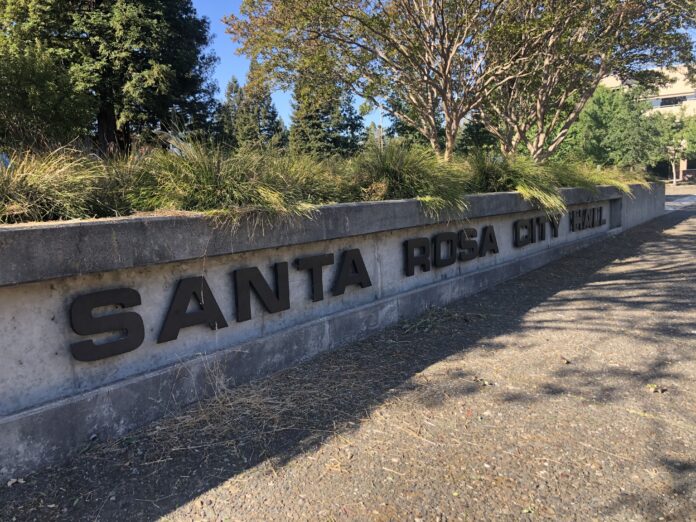After 17 years without a raise, the Santa Rosa City Council is considering asking residents to tie council members’ salaries to Sonoma County’s median income.
In June, a council subcommittee tasked with studying the city’s charter—functionally the city’s rule book—recommended that the full council debate adding a ballot measure to the Nov. 8, 2022 election to significantly increase councilmembers’ pay. The full council did so at a meeting on Tuesday, July 12, after the Bohemian’s print deadline. (You can watch the meeting online here.)
Santa Rosa has seven elected city council members, one of whom serves as mayor. Currently, council members are paid $9,600 per year, while the mayor earns $17,000. Council members also receive benefits, including healthcare and retirement, that are valued at between $19,400 and $33,700 per year, according to a city staff report.
Even with the benefits, it would be nearly impossible for an individual to pay for housing and other life expenses on a council member’s current salary alone.
The proposal recommended by the subcommittee would match the mayor’s pay to the median income of a family of three in Sonoma County, currently $101,500. Councilmembers would be paid two-thirds of the median income, or approximately $67,000.
A staff report estimates that the change in salary would cost the city an additional $426,000 in the first year, plus unknown changes to benefits. As a percentage of the city’s overall budget, the increase would be relatively small—accounting for an increase of 0.34%, according to city staff.
Backers of the wage increase argue that the low pay means that members need to either be independently wealthy or work a separate job, cutting into the time they can dedicate to managing the city. Under the current system, homeowners, retirees and successful business owners are more likely to afford a term on the council, while renters and younger, more diverse candidates are less likely to be able to take on a council member’s workload, estimated to eat up between 20 and 30 hours per week.
“The Committee heard evidence of the workload of the Mayor and Council members, of the difficulties of balancing private employment, child care, family and the responsibilities of Council membership,” the staff report states.
Recent resignations of local elected officials seem to bear out that logic. With the cost of living continuing to climb, some recently-elected officials have left public office, often citing cost of living as one consideration.
After studying the issue, the Charter Review Committee concluded that the council’s wages should be increased to “enable a greater diversity of membership (including those with young families, those with lower paying occupations and those without independent means of wealth)… ensure continued strong commitment and professionalism, and… as a matter of fairness and respect for the extensive work performed by Council members.”
Still, if it’s added to the ballot, Santa Rosa’s measure may face an uphill battle. The optics of politicians giving themselves raises are never great, even though, in this case, they’re paid poverty wages. In 2002, Santa Rosa voters rejected a ballot measure to increase council members’ wages. While members could vote to give themselves incremental raises, they have not done so since 2005, according to a city staff report.
But the tides could be turning. In 2020, Berkeley voters passed Measure JJ, after which Santa Rosa’s new proposal is modeled.
Perhaps of note: Berkeley has a population of around 120,000, while Santa Rosa’s hovers near 180,000.












Good article on pay raise for SR City Counsel.